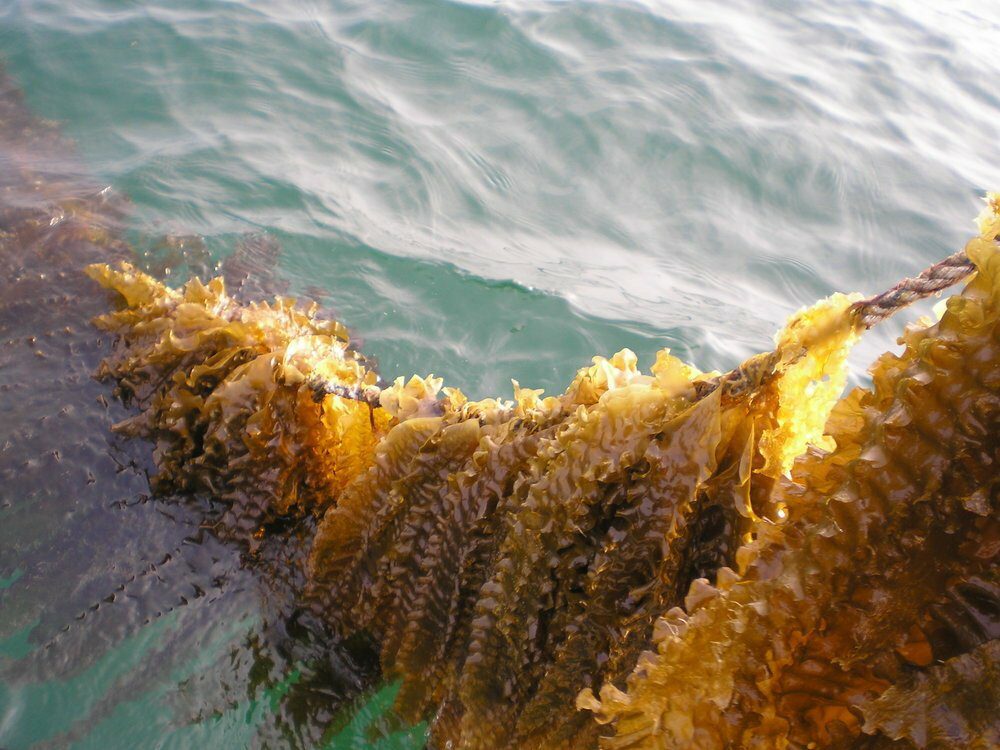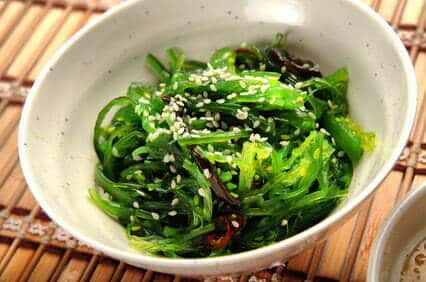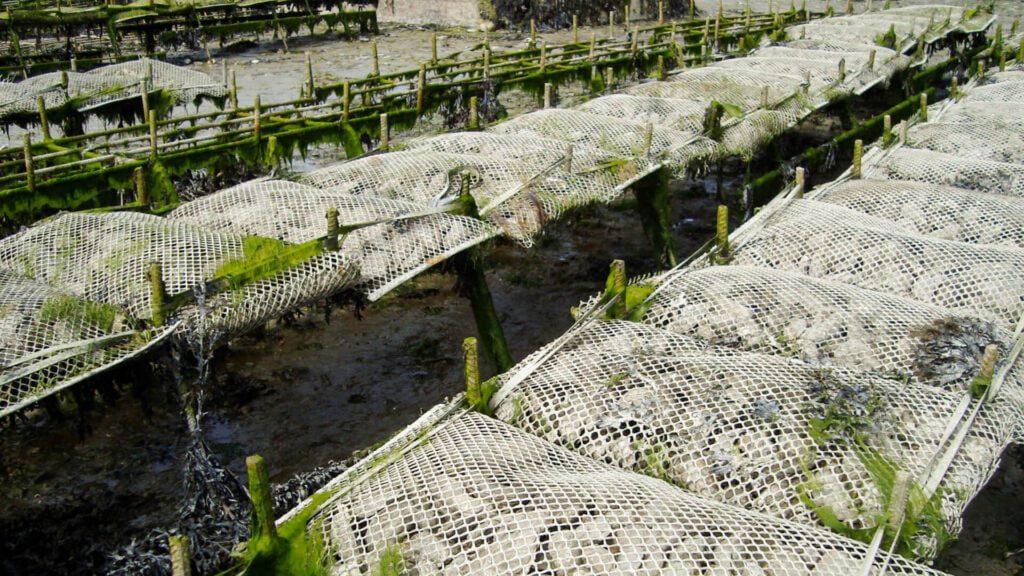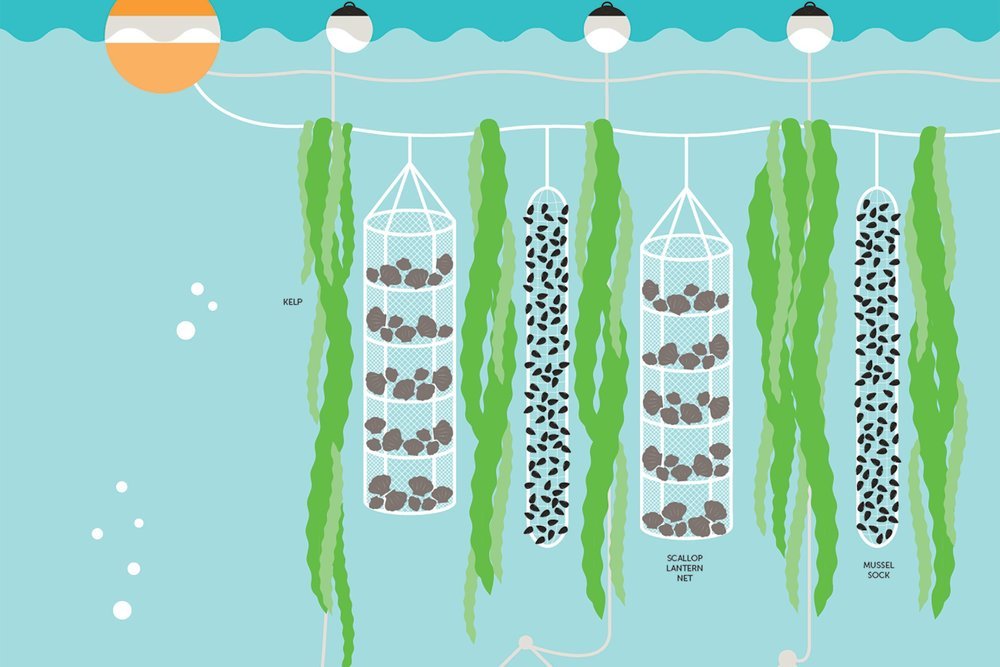Vertical ocean farms are an innovative approach that can produce food and minimize environmental damage, all while cleaning up the oceans.
Agriculture and intensive breeding they are often associated with important environmental issues. Many: the emission of polluting gases, the intensive use of land and water, the use of pesticides, the treatments reserved for animals. I could go on for hours.
To minimize the negative impact of these factors, the tendency to develop sustainable and environmentally friendly farming and cultivation methods is increasingly emerging. One of these, which adds to organic and conservation agriculture, is that of vertical ocean farms.

What are Vertical Ocean Farms?
The method, developed by an organization called Greenwave, uses ropes stretched on the surface of the water, supported by buoys and anchors at the bottom of the sea. Ropes that host kelp and mollusks such as mussels, scallops, oysters and clams.
Thanks to this ingenious design, breeding becomes invisible on the surface. Below the surface of the water, a world of activities that take place in a real submerged farm. The seaweed they are used in foods (snacks, supplements, foods of all sorts) and for additional uses: animal feed, fertilizers, pharmaceuticals, cosmetics and even biofuel. Shellfish are a staple of human diets worldwide.
The goal of vertical ocean farms? Promote sustainable fishing and protect the ocean.

How do they work?
Vertical ocean farms need no additional intervention from the grower to create an environment conducive to the growth of plants and animals.
Molluscs such as mussels, clams, oysters and scallops are all able to thrive in different conditions, avoiding the need to regulate water quality or the use of chemicals that can later prove harmful.
Last but not least, the economic and employment benefits: thanks to the vertical ocean farm method, fish farms can reduce production costs and ensure greater economic stability, as well as the creation of more jobs (even in sectors such as research).
Especially the environment
When Bren Smith (the founder of GreenWaves) discovered that 90% of his seabed fish farms had been destroyed by hurricanes Irene and Sandy in 2011 and 2012, he saw a worsening picture.
I understood then what the impact of the climate crisis would be: it was not a slow process of transformation, we were already on the front line.

This is why it is important to highlight that vertical ocean farms also clean the oceans. Mussels feed on fish excretions, which clean the water and help keep the ecosystem thriving, other shellfish such as oysters are great at removing nitrogen.
The system of suspended “cages” also acts as an artificial reef, which helps reduce the impact of storm surges on coastal communities.
Vertical ocean farms, an industry to follow
In summary, vertical ocean farms can help build a more sustainable future, where there is enough food for everyone, without harming the environment.
Little impact, foods closer to the place of consumption, no chemicals and zero soil consumption: the future also passes through here.


